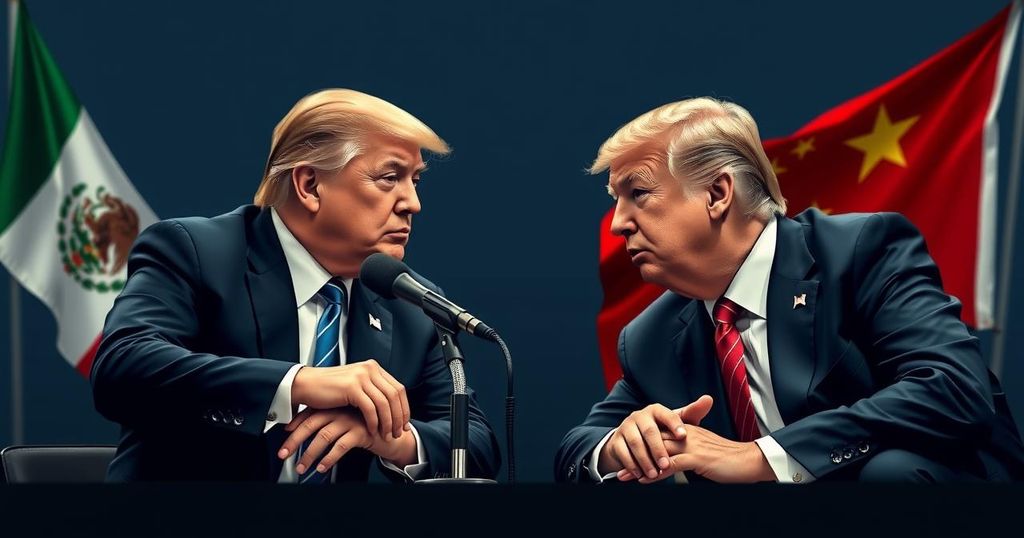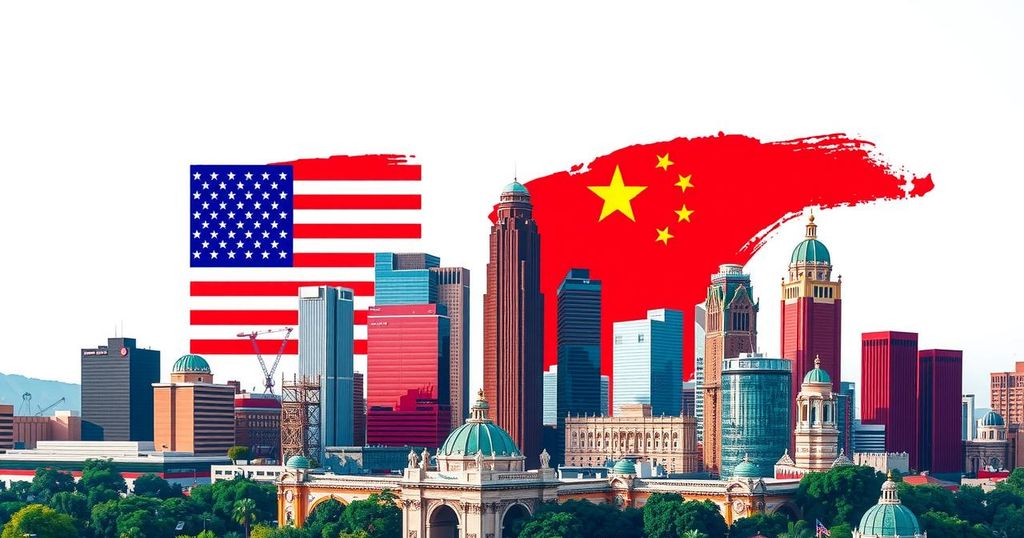Trump Proposes Significant Tariff Increases on Trade with China, Canada, and Mexico
President-elect Donald Trump plans a 10% tariff on Chinese goods and 25% tariffs on all imports from Canada and Mexico as part of his trade policy after inauguration.
President-elect Donald Trump has announced an intent to implement a 10% tariff increase on all Chinese goods imported into the United States. This statement was made via his social media platform, Truth Social, and marks his initial steps towards enacting significant trade policy changes. Additionally, he indicated that on January 20, his first executive orders as president will include a 25% tariff on products imported from both Mexico and Canada, emphasizing his commitment to reforming international trade agreements. Trump is poised to be inaugurated on the same day, ushering in a new chapter of economic policy focused on protectionism.
The discourse surrounding tariffs on imports from foreign nations, particularly China, Canada, and Mexico, has been a pivotal issue in American trade policy. Tariffs are a form of taxation imposed on imported goods, which can influence domestic prices and trade relations. Trump’s proposed tariffs align with his broader economic strategy aimed at prioritizing American manufacturing and reducing the United States’ trade deficit. This policy stems from ongoing concerns about the impact of globalization and foreign competition on domestic industries and jobs.
In summary, President-elect Donald Trump is set to initiate significant tariff increases on imports from China, Mexico, and Canada upon his inauguration. These measures are indicative of his administration’s protectionist stance, aimed at supporting American businesses and reducing reliance on foreign goods. As these policies develop, they are likely to resonate across the global economic landscape, influencing trade relations and market dynamics.
Original Source: www.cnbc.com








Post Comment